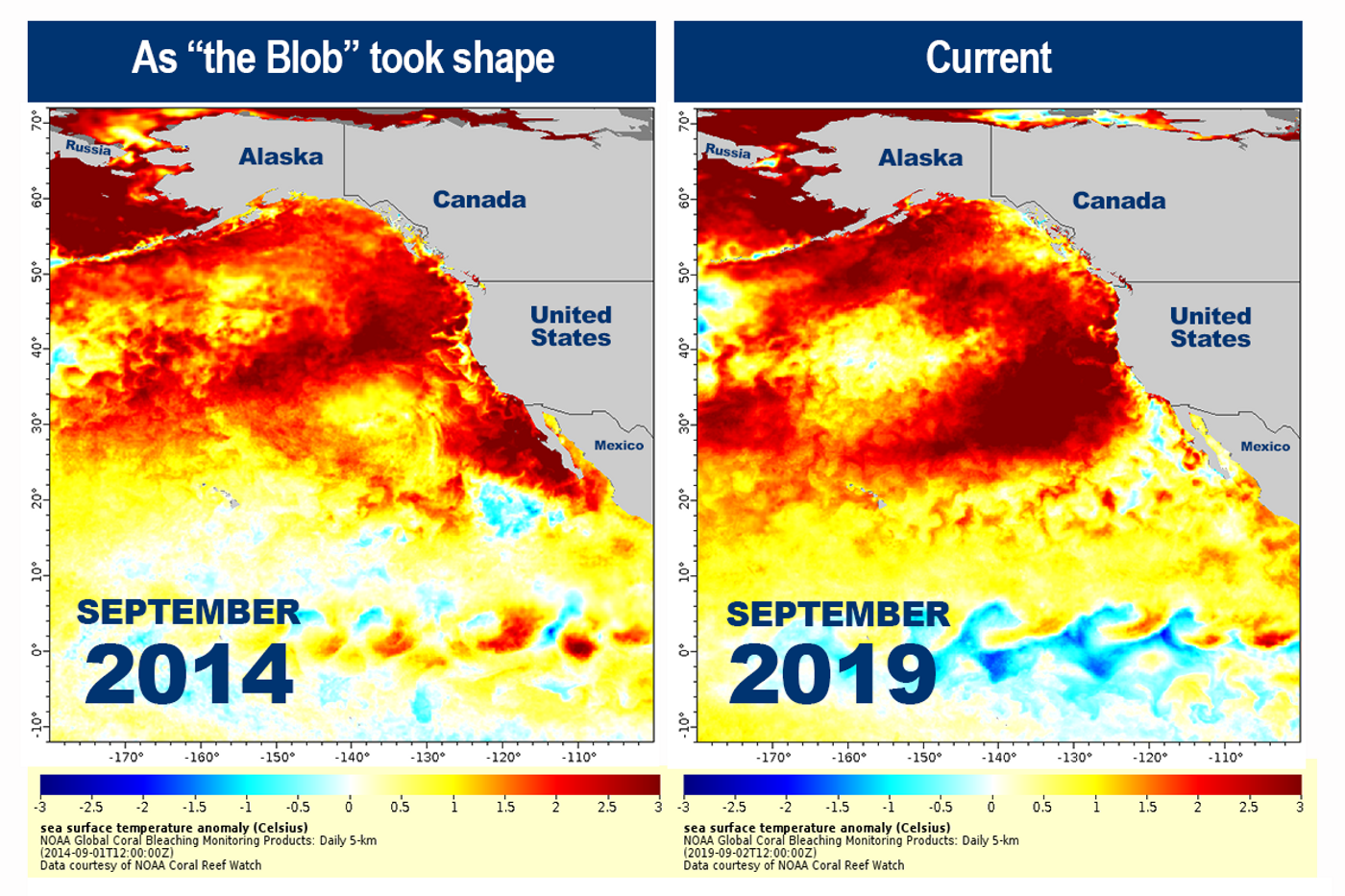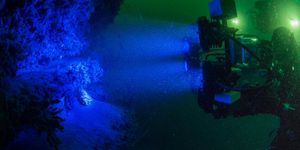"The Blob" is Back
Five years ago, a phenomenon dubbed “the blob” caused turmoil along the West Coast of the Pacific Ocean. No, it wasn’t an invader from space; but a mass of warm water, which according to The Seattle Times, formed in 2014 and peaked in 2015. At its peak, the temperature was nearly seven degrees Fahrenheit beyond the normal range. Since last week scientists from the U.S. National Atmospheric and Oceanic have been monitoring conditions in the same region, as they closely resemble those of the beginning of the marine heatwave from five years past.
In a press release from NOAA, researchers report that the current warm water expanse stretches from Alaska to California. They estimate that it will be similar to the 2014-2015 marine heatwave and that is the second-largest heatwave in the region within the past 40 years. In normal conditions, coastal winds drive cold-water upwelling allowing surface waters to remain cool. However, a high-pressure system has slowed those winds causing the uppermost layers of the coastal region to continue warming. A research paper published in Nature Communications in June of this year cites long-term climate change as a key driver of marine heatwaves.
According to NOAA’s press release, the 2014-2015 event caused devastating ecological impacts including: “the largest harmful algal bloom recorded on the West Coast, which shut down crabbing and clamming for months; thousands of young California sea lions stranding on beaches; multiple declared fishery disasters.” Warmer waters caused a food chain shift, leading to sea lion mothers foraging further at sea and pups taking off on their own in response. Unable to fend for themselves, they stranded along West Coast beaches in record numbers. Additionally, large whales such as humpbacks began feeding closer to shore and incidentally became entangled in crab traps and fishing gear. This time around, a working group is preparing to find ways to reduce entanglements and respond appropriately.
There is a possibility that winds return, in which case “the blob” will dispel. However, NOAA scientists are diligently monitoring the situation and preparing for the environmental changes that will occur as a result of the heatwave. Real-time monitoring and experience from the last heatwave help scientists anticipate and inform on ecological impacts. Nick Bond, a research meteorologist with the Joint Institute for the study of the Atmosphere and Ocean in Seattle—also responsible for naming “the blob”—told NOAA reporters that “there are definitely concerning implications for the ecosystem. It’s all a matter of how long it lasts and how deep it goes.”
Sources: NOAA (Image via NOAA), Seattle Times, Nature









